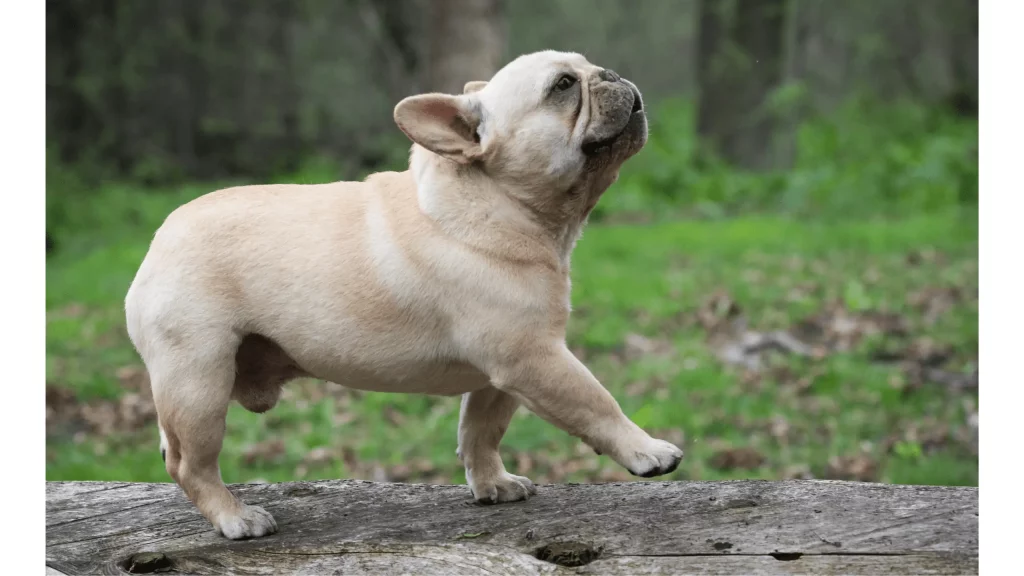Hip dysplasia is a relatively common condition in English bulldogs, affecting a significant portion of the breed. According to the Orthopedic Foundation for Animals, hip dysplasia is considered a major health concern in English bulldogs, with a reported incidence rate of over 60%. This is significantly higher than the average incidence rate for dogs in general, which is estimated to be around 20%.
The high incidence of hip dysplasia in English bulldogs is likely due to a combination of genetic and environmental factors. The breed’s unique physical characteristics, such as its short legs and broad hips, can contribute to stress on the hip joint and increase the risk of dysplasia.
Additionally, the popularity of the breed and limited genetic diversity within the breed can also contribute to the high incidence of hip dysplasia. As a result, it’s important for bulldog owners to be aware of the condition and take proactive steps to prevent or manage it.

What is Hip Dysplasia in Dogs?
Hip dysplasia is a genetic condition that affects the hip joint, causing it to develop abnormally. Over time, this can lead to arthritis, pain, and mobility issues in dogs. Hip dysplasia is considered a polygenic disorder, meaning that it is influenced by multiple genes.
What age do English bulldogs get hip dysplasia?
English bulldogs can develop hip dysplasia at any age, but the condition is most commonly diagnosed in middle-aged to senior dogs. Some dogs may show symptoms as early as 6 to 12 months of age, while others may not show symptoms until they are several years old.
The onset and severity of symptoms can also vary widely between individual dogs and may be influenced by factors such as genetics, environment, and overall health.
What does hip dysplasia look like in English bulldogs?
Hip dysplasia can present in a variety of ways, and the severity of symptoms can vary widely between individual dogs. In some cases, dogs with hip dysplasia may not show any obvious signs until later in life, while in others, the symptoms can appear as early as 6 to 12 months of age. Common signs of hip dysplasia in English bulldogs include:
- Lameness or stiffness in hind legs, especially after exercise or after getting up from a rest
- Reduced activity level or reluctance to engage in physical activity
- Difficulty getting up or down, especially from a lying position
- A “bunny hopping” gait, the dog moves both hind legs together instead of alternating
- Muscle loss in the hind legs, causing them to appear thin or wasted
- Reluctance to climb stairs or jump up onto furniture
- Pain or discomfort when touching or manipulating the hip joint
What Causes Hip Dysplasia in English Bulldogs?
There are several factors that can contribute to hip dysplasia in English bulldogs, including:
- Genetics: Hip dysplasia is largely inherited, so dogs with a family history of the condition are at an increased risk.
- Overweight: Obesity can put additional stress on the hip joint, which can make existing hip dysplasia worse or even cause it to develop.
- Rapid growth: English bulldogs can grow rapidly during their first few months of life, which can cause stress on the hip joint and increase the risk of dysplasia.
- Lack of exercise: Dogs that don’t get enough exercise can develop muscle imbalances that put additional strain on the hip joint, increasing the risk of dysplasia.

How do you treat hip dysplasia in English bulldogs?
Hip dysplasia can’t be cured, there are several steps you can take to prevent or manage the condition in your English bulldog:
- Responsible breeding: Choosing a reputable breeder who health tests their dogs for hip dysplasia and other conditions can help reduce the risk of passing on the gene to offspring.
- Maintaining a healthy weight: Keeping your English bulldog at a healthy weight can reduce stress on the hip joint and help prevent or manage hip dysplasia.
- Gentle exercise: Gentle exercises, such as short walks and playtime, can help keep your bulldog’s muscles in balance and reduce the risk of hip dysplasia.
- Diet: Feeding a balanced, nutritious diet can help maintain a healthy weight and support overall joint health.
- Medications: In some cases, medication can be used to manage pain and inflammation associated with hip dysplasia. A veterinarian can advise on the best course of treatment for your individual dog.
If you suspect that your English bulldog has hip dysplasia, it’s important to seek veterinary care as soon as possible. Early detection and treatment can help prevent or reduce the severity of symptoms and improve the long-term prognosis.
MUST READ: Top 10 Health Issues Every New English Bulldog Owner Should Know
How long can a dog live with hip dysplasia?
The lifespan of a bulldog with hip dysplasia can vary depending on the severity of the condition, the age at which it was diagnosed, and the availability and effectiveness of treatment options.
In some cases, dogs with mild hip dysplasia can live relatively normal lives with few noticeable symptoms, while others with severe dysplasia may experience chronic pain, mobility issues, and a significantly reduced quality of life.
The key is proper management through a combination of veterinary care, diet, exercise, and lifestyle modifications to slow the progression of the condition.
In many cases, dogs with hip dysplasia are able to live long and happy lives with the right care and attention, although they may require regular veterinary check-ups, medication, or physical therapy to manage symptoms. With the right support and care, many dogs with hip dysplasia are able to live well into their golden years and enjoy a good quality of life.
In conclusion, hip dysplasia is a common condition that affects English bulldogs and other breeds. By being aware of the causes and taking proactive steps to prevent or manage the condition, you can help ensure a healthy and happy life for your furry friend.

